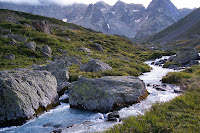November Quiz - Thursday December 1st 2011
Grading System:
1. Skill - Creativity (Pictionary, Role play, Blog)
- Autonomy (Own contribution)
- Critical thinking (own opinion)
- Student's Quiz (see teacher's blog)
2. Quiz of Unit
3. Project - Blog
4. Class participation / Discipline
5. TE (on paper)
______________________________________________________
Student's Quiz (see example)
- Multiple Choice
- True / False
- Short answer
- Gap Filling
- Pictionary
Objectives :
Grading System:
1. Skill - Creativity (Pictionary, Role play, Blog)
- Autonomy (Own contribution)
- Critical thinking (own opinion)
- Student's Quiz (see teacher's blog)
2. Quiz of Unit
3. Project - Blog
4. Class participation / Discipline
5. TE (on paper)
______________________________________________________
Student's Quiz (see example)
- Multiple Choice
- True / False
- Short answer
- Gap Filling
- Pictionary
Objectives :
- to explain how the lithosphere is formed - to explain how the plates move and what consequences these movements have - to describe what happens on the boundaries between plates - to relate the formation of igneous and metamorphic rocks with the internal dynamics of the earth Overview: 1. Evidence of the earth's internal energy. 2. Lithospheric plates 3. What happens at the edges of the plates ? 4. The earth's internal energy and rocks As this unit is a review of previous lessons, students have to get deeper into the subject and present the following projects :) Example / Case study / Tungurahua - Ecuador Plannification and methodology: Create pictionary quizzes, crosswords, quizzes, experiments. Provide links with new information you have discovered by yourself. Week 1: 07.11.-11.11.2011 Project 1: How does a volcano work ? How does it evolve ? Project 2: How does a earthquake works ? How does it evolve ? Students make a presentation with PPP :) Week 2: 14.11.-18.11.2011 Project 3: What is a continental drift ? Project 4: What is a lithospheric plate ? Teacher's questions: Students have to upload the questions and put their own examples. (pictures, links...) 1. What is a synonym of lithospheric plates ? 2. What are the three kinds of lithospheric pates ? 3. Match the principal LP (p. 129)with the three kinds of LP. 4. What is special about the continental plates ? 5. Where is the boundary of the S.A. and African Plates ? 6. What are the types of boundary between plates ? (p.130)  7. What is a Rift Valley ? 8. What will happen to California eventually and why ? (p.131) 9. How were the Himalayas formed ? 10. How is a trench formed ? Week 3: 21.11-25.11.2011 Project 5: Explain the rock cycle. You may use videos, pictures, scientists, university students... The Rockcycle http://www.youtube.com/watch?v=d4XAOY-VEEI&feature=related Where does the rock cycle start? The mantle is made out of .... ? How thick is the earth's crust ? Why is the earth's crust solid ? What can you say about the structure of igneous rocks ? Remember what a cristal was ? (page 11) What happens when a rock cools very quickly ? Physical weathering http://www.youtube.com/watch?v=t-AcasoiFEo&feature=related Daytime - It is raining. What happens with the cracks of the rocks? Nightime - It is freezing. What happens with the rocks? Geology erosion and transportation http://www.youtube.com/watch?v=sDUpwM8brgU&feature=related Why is he painting the rocks? Describe their experiment? What does he mean by "20 m in a single year"? What could happen to piece of land they are standing on in a couple of month? What are the results? Where do the rocks come from? What happend to the big stones? What happened to the little stones? What also gets moved due to the forces of water? Sedimentary Rock formation http://www.youtube.com/watch?v=9Df4CtlZ0AQ&feature=related Metamorphic Rock formation http://www.youtube.com/watch?v=ggIpPHIeJu4&feature=related Properties of rock types http://www.youtube.com/watch?v=1fnBCPdc39U Summary of Rock Cycle http://www.youtube.com/watch?v=VbtVtTSVZSc&feature=related The Rock Cycle (best video) http://www.youtube.com/watch?v=ihfKNRdlE2E&feature=related  For more detailed info about magma, igneous rocks, volcanoes and plutons click here (illustrated) Week 4: 28.11.-02.12.2011 Quiz preparation Field trip - Cotopaxi - With a geologist (rock cycle) - Who has some contacts ?  http://www.geopuce.com/autores |





















